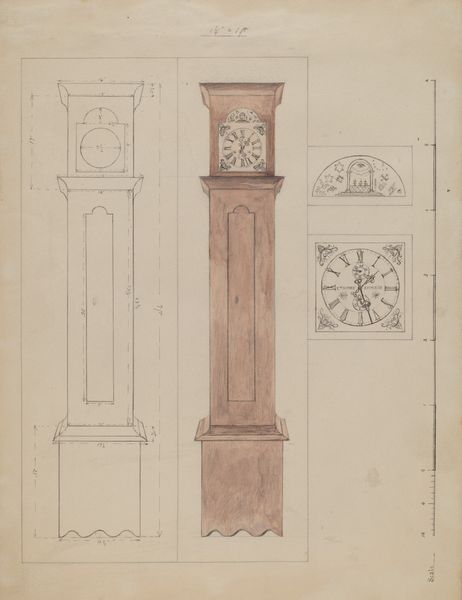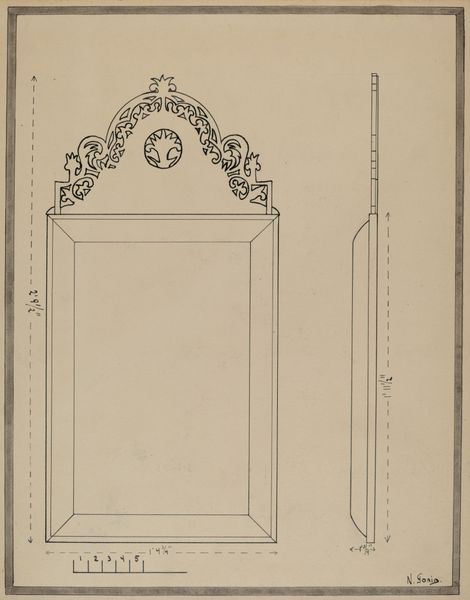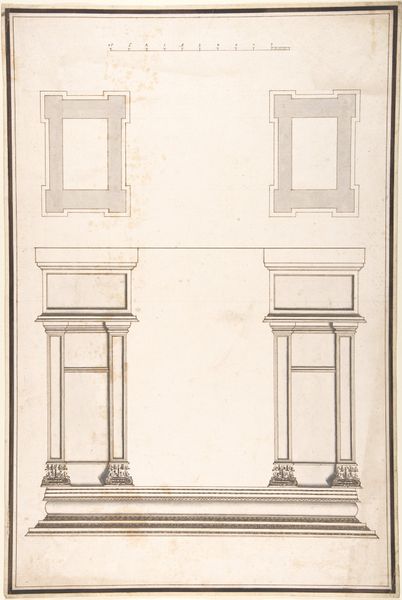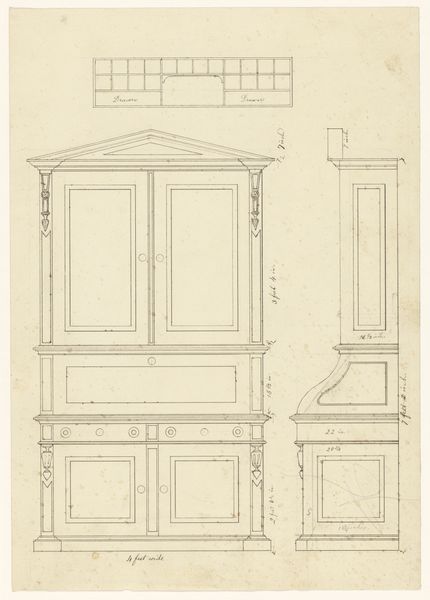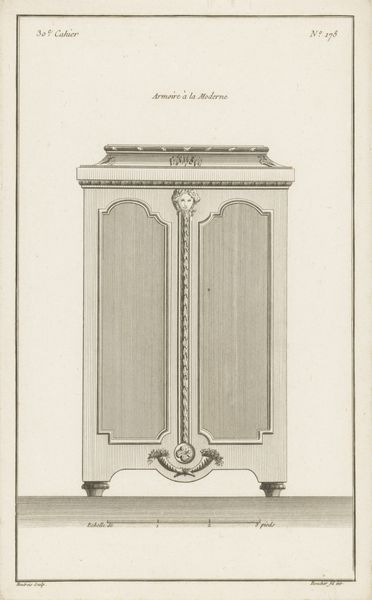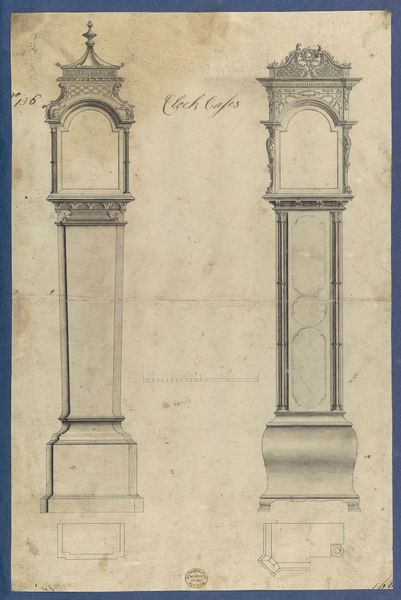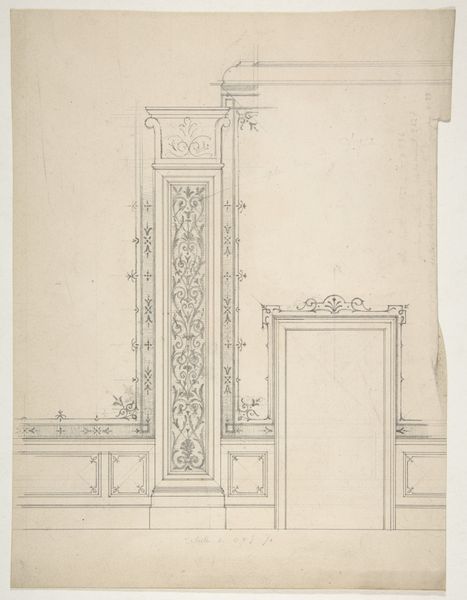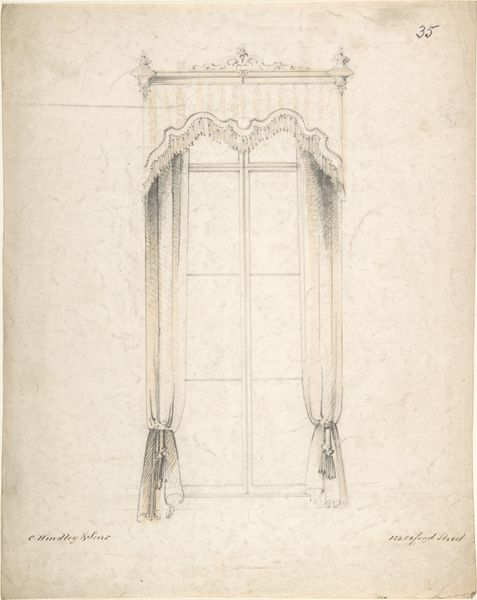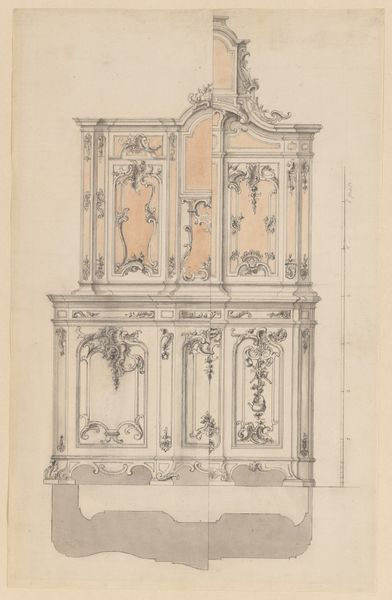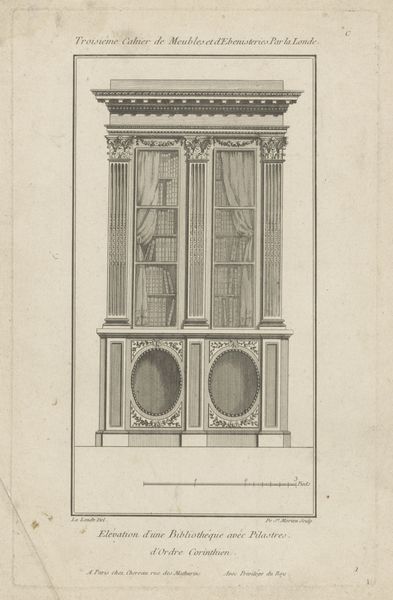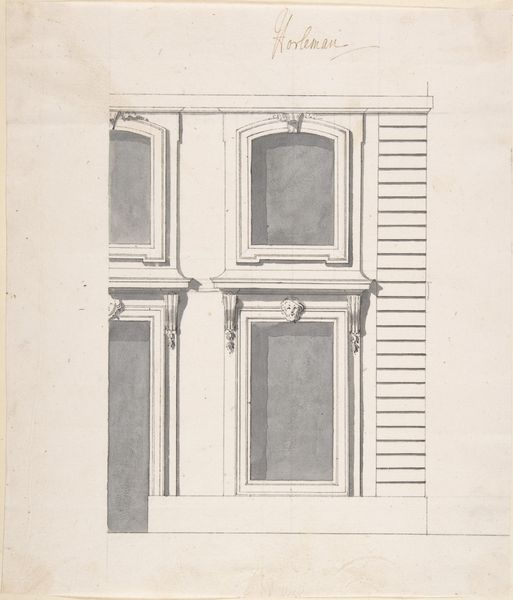
drawing, paper, pen
#
drawing
#
paper
#
geometric
#
classicism
#
line
#
pen
#
academic-art
Dimensions: overall: 36 x 25.3 cm (14 3/16 x 9 15/16 in.)
Copyright: National Gallery of Art: CC0 1.0
Curator: This meticulous drawing is attributed to Ernest A. Towers, Jr., circa 1936. Executed in pen and ink on paper, it presents detailed elevations of what appears to be a grandfather clock. What strikes you immediately? Editor: The precise linework. It has the feel of a technical diagram, stripped of any superfluous flourish. Even with my limited understanding of object design, there’s a certain coldness here, like I'm looking at the anatomy of a thing, but not the thing itself. Curator: That’s insightful. Towers' academic art style positions this piece within a tradition emphasizing draughtsmanship. The lack of color also pushes the viewer to consider it outside conventional artistic interpretations. Editor: It makes me think about the role of drawing in craft and industrial production. This wasn’t intended as a painting to be admired in a gallery. What labor, both intellectual and manual, went into creating the physical clock? And what socioeconomic stratum did such an object typically furnish? Curator: That's crucial, because understanding this image in 1936 requires recognizing social divisions in consumption during the Depression. Were luxury goods available in such times, and who had access to them? Editor: Absolutely, it becomes about understanding who commissions these drawings and the process by which wood, metal, glass, and human skill all combine to measure hours—what a bizarre product. This isn’t simply time being measured, it’s material resources made into visible displays of luxury. Curator: Precisely, examining it further through this lens is exciting. To go further, consider this diagrammatic style and how this links or divides ideas of function and form. Editor: What's compelling about the stark simplicity is the direct engagement with construction and production – an attempt to showcase labor— or not, because such simplicity erases labour itself in some ways. I'm left feeling as if Towers invites us to reflect on materiality and what it symbolizes in art and commerce. Curator: It does indeed pose such fundamental questions about making, owning and representing time.
Comments
No comments
Be the first to comment and join the conversation on the ultimate creative platform.

